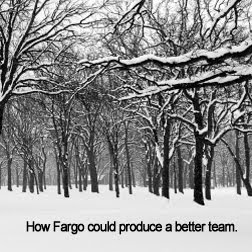
If there is a trend to content creation online, the leading theme is probably perception. As more marketing and public relations professionals enter the space, they seem to gravitate toward it, given the mistaken (but partly true belief) that perception somehow equals reality. It doesn't. Not really.
Knowing this, is it any surprise that professionals who cannot come up with innovative ideas rely on their company's "authority" to propel them forward? Or that people are clamoring for an "online influence" measurement system even though the very notion is silly? Or that, every year, agencies allow themselves to produce campaigns that fail because they don't recognize the difference between a client and a customer? Or that, despite influence and authority, you can find plenty of people at the top who demonstrated that, for all their popularity and promise and entitlements, they still suck at communication?
In the battle between perception and reality, please remember to keep it real. Consider these five posts as evidence.
Best Fresh Content In Review, Week of December 13
• Where Do Business And Social Meet?
Valeria Maltoni raises some interesting questions about the role of communicators and how some people with corporate roles attempt to leverage their title and company brand in order to gain visibility in social media and reap personal benefits. Her thinking touches very well with what I wrote about personal brands earlier this year. Applied here, we might conclude that those who lack ideas or popularity frequently attempt to leverage their "authority." It's neither wrong or right, but certainly reminds us not to follow people blindly.
• The Top Ten Best (And Worst) Communicators of 2010.
Most fresh content picks tend to stay away from lists, but this one by Ben and Kelly Decker is worth the read. It's well thought out and all the more alluring because it starts with the best and not the worst. Even better than simply dropping in a few names and calling it a day, the Deckers work hard to share exactly why they felt some people deserved to be on one list or another, making the lesson much more fitting. When you read about these 20 people and their stories, you might ask yourself in 2011 whose company you would rather keep.
•How Social Semantic Search Defines People.
Geoff Livingston does an excellent job reminding everyone that search isn't about technologies. It's about people. And just as often, it's about the semantics we type in in order to discover the content we want to cover. One person might type in any number of combination of words to find something. Another could type in something else, even if they want the same content. But even more striking is the next layer of personalization. Worse might be the fact that some of that personalization relies increasingly on popularity.
• Clients Aren't Customers: Why Most Agencies Suck At Project Management.
From our perspective, Ian Lurie has had a banner year in writing content that connects. This week was no exception as he pinpointed the difference between clients and customers. Clients, he points out, typically control the fate of an entire project, whether it's a marketing campaign, a new web site or an application. Customers do not. They only purchase based on the final product. What he points out so clearly, is that most agencies get it wrong. They do whatever the client tells them, thinking of them as customers. Except, eventually, when anyone at an agency does that, they set themselves up to fail because they will still be accountable for the results, even if the client made all the decisions.
• Five Primary Problems With Klout.
Geoff Livingston has since softened his stance on Klout, but the initial post was still right on the money. Somehow, the service has been embraced as some sort of influence indicator to organizational managers who don't know any better. Livingston points out five reasons you might think twice. And those, from my opinion, are only the tip of the iceberg. At the same time, please do keep in mind that I have nothing personal against Klout (although some people say I sound like I do.) Nah, not at all. I have a problem with the entire concept of online influence measures. There is even a post waiting in the wings to kick off the new year.



































